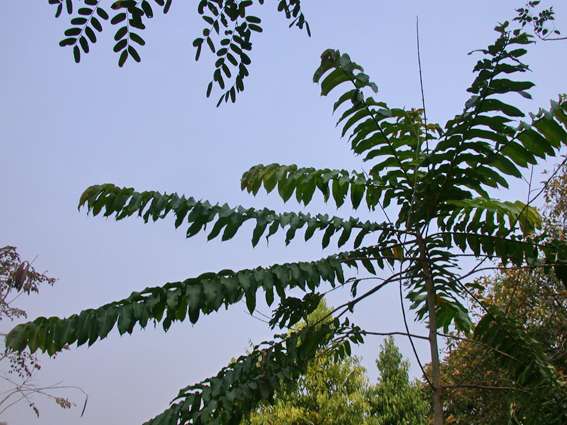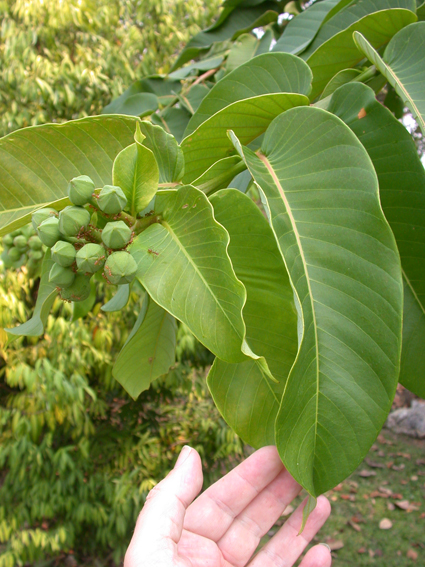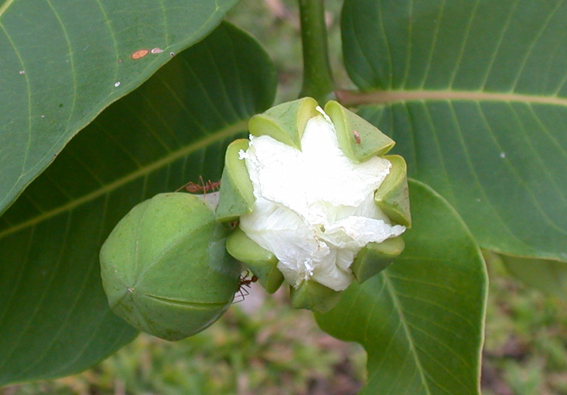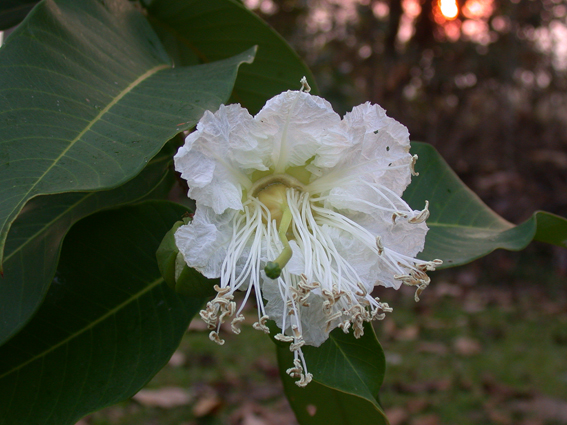Budding duabanga
Duabanga (Duabanga grandiflora, Lythraceae, Sonneratiaceae) is budding right now at Dokmai Garden in Chiang Mai, northern Thailand. The flowers are very special and since our tree is young you can enjoy them at eye-level. In a forest you are often limited to admiring the shed flowers on the ground or seeing them 30 meters up with binoculars. Like with kapok which also blooms now, duabanga flowers are essentially night-blooming and are pollinated by fruit bats, so their prime time is early evening.
Tem Smitinand lists 27 alternative Thai names, of which ’lamphu pa’ is commonly used. The many names imply the tree is important, and the timber can be used for smaller wooden products, furniture and veneer. The leaves can be used as a fodder and flowers and fruits are edible. Leaf extracts have been used traditionally in Thai medicine and there are some scientific proofs showing stimulation of collagen production. In nearby Mae Khanin Tai village it is one of the sacred trees near the village spirit house.
The international scientific name Duabanga is a Latinized form of ’duyabangga’ which is a name for the tree in Tripura State, North East India.The scientific name was coined by Francis Buchanan-Hamilton and published in 1835 after his death. Buchanan-Hamilton was a Scottish physician who lived for over 20 years in India, where he established the Calcutta Zoo and directed the ‘Institution for Promoting the Natural History of India’ in 1804. Like Linnaeus, his job was to study ’everything’, from geology and mining to antiquities, religion and botany. A true gentleman!
The tree can reach 60 meters in height and 2 meters in diameter, and so it is the tallest tree species in the Thai forests. Due to logging, tall trees are rare, but the many saplings you see on the mountain roads north of Chiang Mai show that Fangorn is returning. It is restricted to evergreen forests in East India and Southeast Asia, often preferring proximity to streams.
Duabanga grandiflora was recently moved together with its cousins of the Sonneratia genus (a group of mangrove plants common in southern Thailand) from the Sonneratiaceae family to the Lythraceae family. This family also includes Lagerstroemia and Punica. In Europe the most famous representative of the family is purple loosestrife, Lythrum salicaria, a low herb.
 This sapling at Dokmai Garden is three years old, and a daughter of the sacred tree in Mae Khanin Tai. Since the minute seeds are hard to germinate it is better to dig up little seedlings. The long branches with their long leaves are so characteristic you may identify it from the car.
This sapling at Dokmai Garden is three years old, and a daughter of the sacred tree in Mae Khanin Tai. Since the minute seeds are hard to germinate it is better to dig up little seedlings. The long branches with their long leaves are so characteristic you may identify it from the car.
 Red weaver ants feed on the sugary exudates from the flowering buds, just like black ants do in peony flowering buds in temperate climate. The ants were invited by the plant to protect the flowers, which are known to be eaten by monkeys. The flowers are the reproductive organs of the tree, and without them there will be no children (fruits and seeds).
Red weaver ants feed on the sugary exudates from the flowering buds, just like black ants do in peony flowering buds in temperate climate. The ants were invited by the plant to protect the flowers, which are known to be eaten by monkeys. The flowers are the reproductive organs of the tree, and without them there will be no children (fruits and seeds).
 If the flower looks like this in the morning, you know that about 12 hours later there will be a white flower shining in the night. The fragrance at this stage reminded me of black truffles or raw milk.
If the flower looks like this in the morning, you know that about 12 hours later there will be a white flower shining in the night. The fragrance at this stage reminded me of black truffles or raw milk.
 This is the flower of the bud pictured above, about 23 hours later. The stamens are already collapsing and falling to the ground. Since I had no pollinator visiting, I pollinated the stigma myself to be sure I can follow its fruit formation. When the flower opened at night around 23.00, it was full of large nectar droplets. The nectar was sweet, but not particularly flavourful. Surprisingly, the fragrance seemed stronger in its budding stage than what was emitted by the open flower.
This is the flower of the bud pictured above, about 23 hours later. The stamens are already collapsing and falling to the ground. Since I had no pollinator visiting, I pollinated the stigma myself to be sure I can follow its fruit formation. When the flower opened at night around 23.00, it was full of large nectar droplets. The nectar was sweet, but not particularly flavourful. Surprisingly, the fragrance seemed stronger in its budding stage than what was emitted by the open flower.
Text & Photo: Eric Danell



Talking about Red weaver ants, I don’t see many of them any more. When I was a child, my mum went to the forest to get their eggs, they were every where. We had Suan Lamyai long time ago, and almost every tree had this red weaver ant lived in it. Also in the market, there would be lots of red ant eggs for sale but I rarely see them now. I have some in my garden but I never saw the nest. I quite like them. In fact, I have many other ants that I don’t like them, especially the fire ants (มดแดงไฟ)
Dear Aree,
We think the use of pesticides in gardens and orchards have lowered their numbers. It is unnecessary because the ants do the same job but for free, and without damaging the nerves of the gardener
We like to eat them too.
Kate and Eric